Tension headaches are a common problem, with millions of sufferers worldwide. According to Migraine Canada, in the country, tension-type headaches occur at an estimated 30% to 80% over a person’s lifetime. It affects about 20% of the population (approximately 6 million people) at any given time while chronic tension-type headaches affect about 2% of the population.
While many turn to medication for relief, a surprisingly effective and natural solution exists: self-massage with a lacrosse ball.
Understanding Tension Headaches

Unlike migraines, which cause throbbing pain on one side of the head and often come with nausea and sensitivity to light, tension headaches manifest as a dull, aching pressure or tightness, often described as a feeling like a band is wrapped around the head.
Here’s a deeper dive into the potential causes and symptoms of tension headaches:
Causes
-
Muscle Tension
The primary culprit behind tension headaches is tightness in the muscles of the scalp, neck, and upper shoulders. This tension can arise from various factors, including:
-
Stress
Chronic or episodic stress can lead to muscle tension, triggering headaches.
-
Poor Posture
Hunched posture over computers, phones, or while driving strains the neck and shoulder muscles, contributing to tension headaches.
-
Dehydration
Dehydration can lead to muscle stiffness and tightness, potentially triggering headaches.
-
Eye Strain
Staring at screens for extended periods without breaks can cause eye strain and contribute to tension headaches.
-
Teeth Grinding
Clenching your jaw or grinding your teeth unconsciously can tighten facial and neck muscles, leading to headaches.
-
Sleep Issues
Both lack of sleep and poor sleep quality can contribute to tension headaches.
Symptoms
Tension headaches typically present with the following symptoms:
-
Dull, Aching Pressure
The most characteristic symptom is a dull, aching pressure or tightness, often felt around the forehead, temples, or the back of the head.
-
Tenderness
The scalp, neck, and shoulder muscles may feel tender to the touch.
-
Pain Intensity
The pain is usually mild to moderate and doesn’t worsen significantly with movement.
Some people may also experience:
- Fatigue
- Difficulty concentrating
- Irritability
- Mild sensitivity to light or sound
How Lacrosse Ball Work Can Help
Lacrosse balls, typically used for self-myofascial release (SMR) on muscles, can be surprisingly effective in relieving tension headaches. Here’s how:
-
Trigger Point Release
Tight muscles often harbour trigger points, small knots that can cause referred pain to other areas. Applying pressure with a lacrosse ball on these trigger points can help alleviate tension and reduce pain.
-
Improved Blood Flow
Self Massage with a lacrosse ball increases blood flow to the targeted area. This enhanced circulation helps deliver oxygen and nutrients to the muscles, promoting relaxation and reducing pain.
-
Muscle Relaxation
The pressure applied by the lacrosse ball helps lengthen and relax tightened muscles. This reduces tension and pressure on the nerves, ultimately easing the headache.
Using a Lacrosse Ball for Tension Headaches
Note that this exercise targets muscles between the shoulders. But this helps with tension headaches because many of those muscles travel all the way up the neck and even attach to the base of the skull.
Instructions
Here’s a step-by-step guide on how to use a lacrosse ball for tension headache relief:
-
Find a Comfortable Position
Lean on the wall with your feet about one foot away from the wall.
-
Locate the Target Area
Place the lacrosse on your lower back, to the side of the spine, where you feel the tension.
-
Support Your Elbow
Place your hand (the one on the side with the lacrosse ball) on the opposite shoulder and use your other hand to support your elbow.
-
Apply Pressure
Gently lean into the lacrosse ball, applying moderate pressure. You should feel a sensation of tightness or discomfort, but not sharp pain.
-
Maintain and Breathe
Hold the position for 10-15 seconds, focusing on your breath. Inhale slowly through your nose and exhale through your mouth.
-
Move and Repeat
Slowly roll the lacrosse ball up and down your back, applying pressure to any tight spots you encounter. Repeat steps 3-5 on each side of your mid-back.
Additional Tips
-
Start Gentle
If you’re new to lacrosse ball work, begin with light pressure and gradually increase it as your muscles tolerate it.
-
Stay Hydrated
Drinking plenty of water helps improve blood flow and muscle function, enhancing the effectiveness of SMR.
Frequency and Consistency
For optimal results, incorporate lacrosse ball work into your routine daily, and progress to 2-3x per week as symptoms improve. Consistency is key to experiencing long-term relief from tension headaches.
Note that this exercise achieves best results when combined with the following exercise:
When to Seek Professional Help
While self-care measures like lacrosse ball work can be highly effective for tension headaches, there are situations where seeking professional help is crucial. Here are some key indicators that it’s time to consult a healthcare provider:
-
Severity and Persistence
If your headaches are severe, persistent, or become progressively worse, seeking professional help is essential.
-
Accompanying Symptoms
Headaches accompanied by other concerning symptoms like nausea, vomiting, vision problems, fever, or neck stiffness warrant a professional evaluation.
-
Headache After Injury
If your headache developed after a head injury, such as a concussion, see a doctor or chiropractor immediately.
-
Sudden Change in Headache Pattern
Any sudden change in your usual headache pattern, such as increased frequency, intensity, or location, should be evaluated by a healthcare professional.
-
Ineffectiveness of Self-Care
If self-care measures like lacrosse ball work and over-the-counter medications fail to provide relief, consulting a professional can help identify the underlying cause and develop a personalized treatment plan.
Tension headaches can significantly disrupt your daily life. Fortunately, self-massage with a lacrosse ball offers a safe, natural, and effective way to find relief. By incorporating this technique into your routine, you can manage your headaches and regain control of your well-being.
For guidance on managing tension headaches and other musculoskeletal issues, contact Fairway Chiropractic Centre for chiropractic care. Our team of experienced chiropractors can help you achieve optimal health and well-being.
Call us at 519-748-5535.











